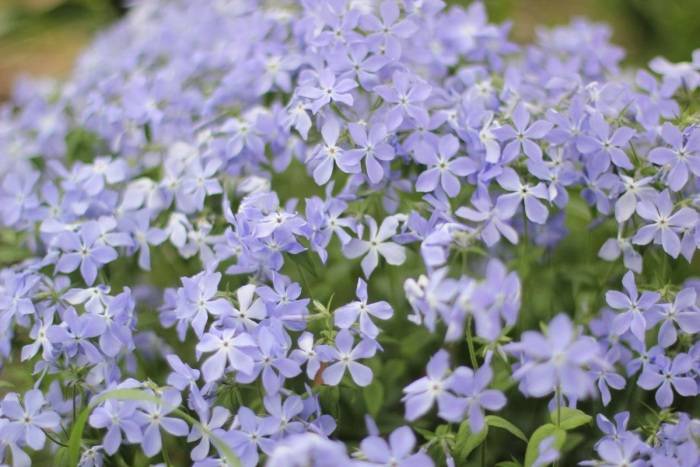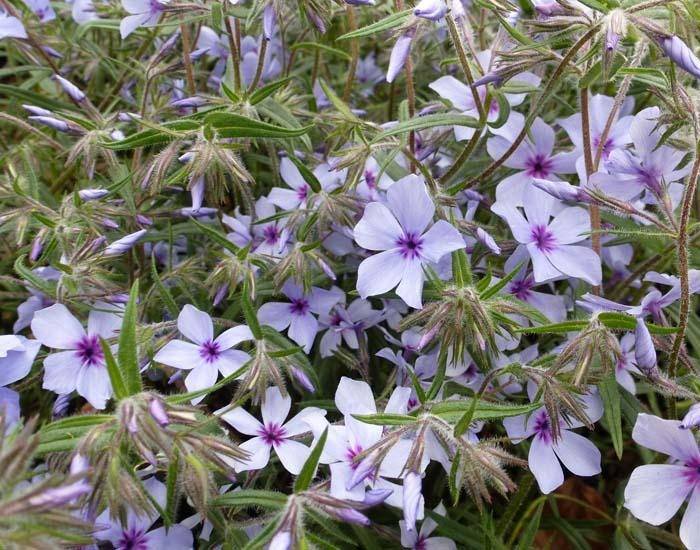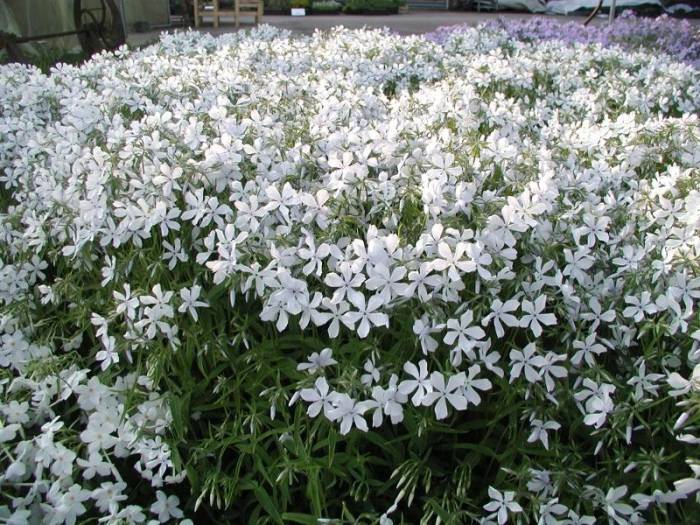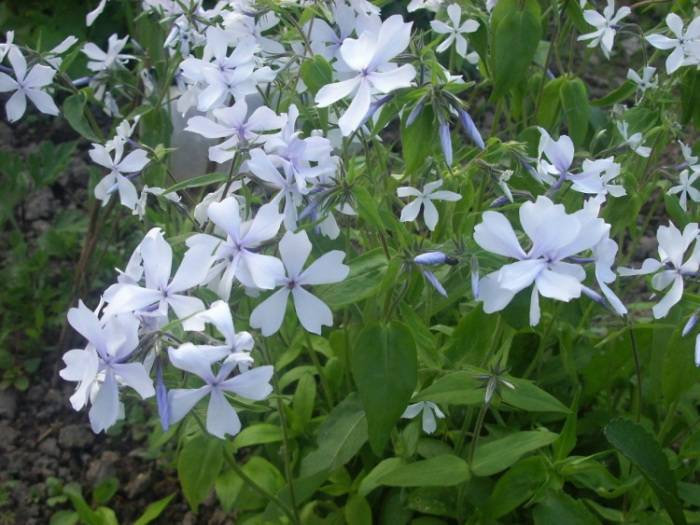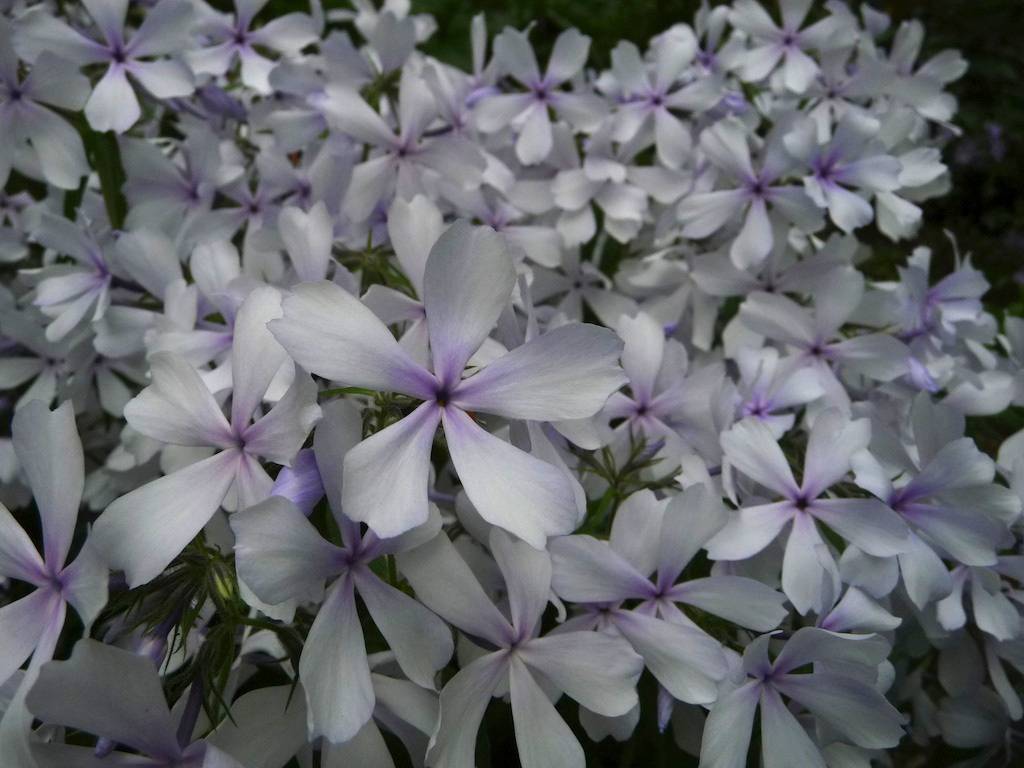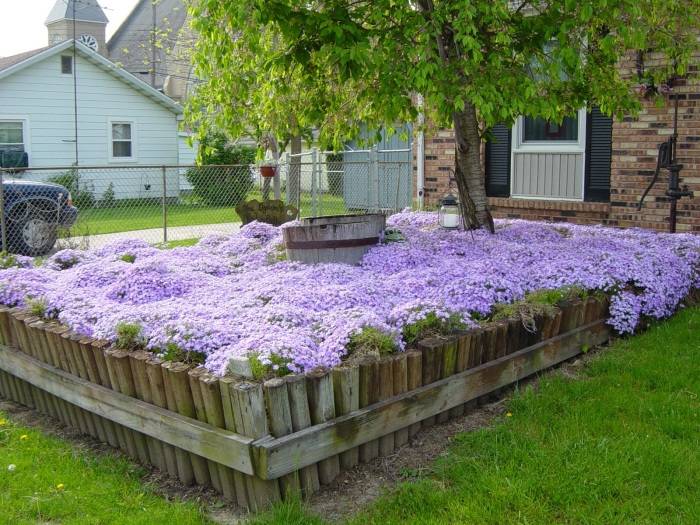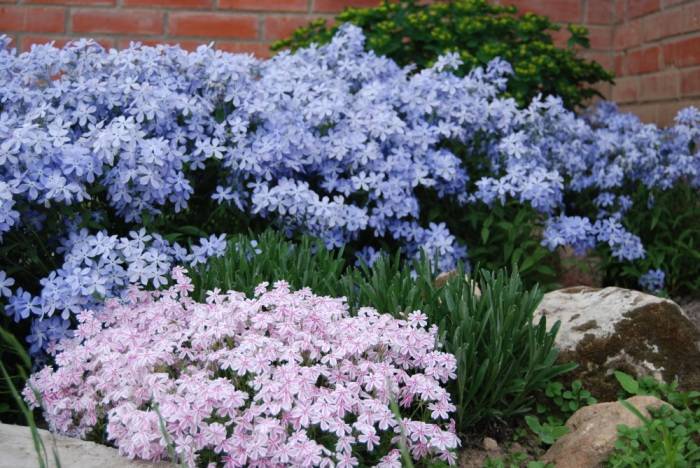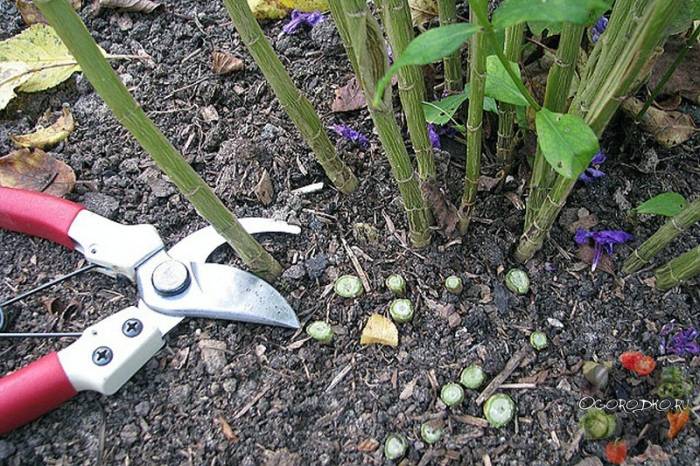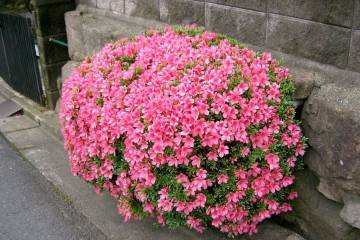Spread blue phlox: planting and care
Content:
Phloxes combine a lot of qualities pleasant for flower growers: long flowering, decorative effect, pleasant aroma and unpretentiousness. Even harsh Siberia is suitable for growing these flowers. With proper care, they will delight for many years.
Description of the species
The Latin name for the flower is Phlox Divaricata. It appeared in Europe at the beginning of the 18th century. by the will of the famous plant lover J. Tradescant. The first scientific description of the plant in question was given in 1737 by K. Linnaeus. He also called this flower phlox, which means "flame". This name was explained by the bright colors and shape of the petals of wild-growing specimens.
The splayed phlox is a perennial species. One bush can delight with its flowering for 10 years. The stems and leaves are renewed annually, and the rhizome hibernates perfectly in the ground.
Like most varieties, the splayed one was introduced from Canada. It got its name because its inflorescences are loose, the flowers seem to bristle on the stem. They do not look like bright brushes of other types.
The length of the stem together with the inflorescence rarely exceeds 40 cm. But, since this species is semi-creeping, the height of the curtain should be no more than 25 cm. Flowers in most varieties have lavender, blue, light blue shades.
The gardens are decorated with many varieties of the species. Below are the most popular ones.
Montrose Tricolor is a wide-spread phlox with blue flowers. The color of the leaves is white, green and light pink.
Blue Dreams are lilac-blue flowers with a dark center and a pleasant scent.
Chattahoochee is a white phlox with a purple core.
Fullers White is a snow-white variety.
Dirigo Ice - white or bluish flowers with a purple "eye".
May Breeze - pale lilac, almost white flowers with a purple center.
Phlox in landscape design
These flowers are widely used to decorate the garden space. Most often, splayed blue or light lilac phlox (Blue Dreams, Dirigo Ice) looks good against the background of dark needles.
The mix of varieties looks good in an array on a lawn. Grandmothers also planted these flowers along the paths, this technique still works. Phloxes fit well with daylilies and hosta. Such a framing of the path will look good during the entire growing season.
Delicate lilac and blue shades of splayed phlox allow it to fit well with the rustic style. In addition, the flower will adorn rockeries, rock gardens and a rock garden.
Reproduction methods
You can propagate these flowers in one of four ways.
By dividing the bush
It is advisable to use this breeding method before flowering in May. An adult 4-5 year old bush is completely dug up and divided into parts.Each delenka should have its own root system, as well as a stem and leaves.
They are planted in open, well-moistened soil.
Reproduction by layering
Such reproduction can begin, regardless of flowering, from mid-May to mid-July.
First, you need to loosen the soil around the bush. For this method, the lower shoots are used. They are gently pressed to the ground with wooden or plastic staples. Top it off with a thin layer of nutrient substrate (no more than 2 cm).
Layers are watered regularly. You can use special preparations for root formation. Shoots in this form remain until next spring. In May, the cuttings are separated from the mother plant and transplanted together with a lump of earth to a permanent place.
Seeds
Seeds are not formed in many varieties of splay phlox. But if, nevertheless, it was possible to obtain seed material, then its planting is carried out in special containers or, if the weather permits, in open ground. The substrate is made up of equal parts of humus, peat, leafy earth and river sand. Seeds are sprinkled with a thin layer of earth no more than 2 cm. From containers, small phloxes are transplanted into open ground at the end of April.
Cuttings
Phlox gains its maximum vitality by mid-May before flowering. Therefore, it is better to cut the cuttings at this moment, they will give roots faster.
For reproduction, a large, strong shoot is chosen. Cut it off at an angle of 45 °. The knife or pruner should be sharp so that no sharpened edges remain. Garden tools must be disinfected with alcohol or potassium permanganate.
The cut off shoot is divided into parts by two internodes. The slices are dipped in charcoal. Cuttings are always planted under a film in soil well spilled with water. The greenhouse needs to be ventilated daily. To accelerate germination, you can use a root preparation. Feeding is required. Sprouted cuttings are planted in the spring.
Place for planting a flower
This type of phlox prefers light shading. Leaves can burn in the open sun. The sun is permissible only in the morning or evening hours.
In full shade, this species does not bloom well: the stems are elongated, the leaves turn pale.
When choosing a place for planting, it must be borne in mind that the stems of the plant are not erect, but creeping. And the expanded phlox grows rapidly. Resistant to cold weather, you can not cover for the winter. At the same time, he does not like drafts.
Soil for flowers
The flower is able to grow even on the scanty sandy and rocky soils. Abundant flowering is possible only on lungs, air and water permeable. Best of all, this flower takes root on slightly acidic or neutral loamy soil types. Sour options are not suitable for phlox. If there is such a land in the garden, then the acidity must be reduced with the help of ash, chalk, slaked lime, dolomite flour.
Phloxes are always planted after spring and before the onset of autumn frosts.
Care Tips
Phlox is unpretentious, even a beginner can take care of him.
Watering and weeding plants
Phlox growing in a humid, shaded place need not be watered at all, except for days when the temperature exceeds the 30-degree mark. Phlox growing in a lighted place is watered regularly.
Watering is carried out in the evening. The water should not be cold.
The splayed phlox spontaneously creates layers, they need to be planted in another place.
We need regular weeding from weeds, with which this plant is unable to fight for nutrients from the soil.
Top dressing
During the growing season, you need to carry out 4-5 dressings. During flowering, preference is given to nitrogenous fertilizers. Then you can use complex. After flowering, fertilizing is carried out with phosphorus-potassium fertilizers.
Pruning
Flowering will be longer and more lush if phlox is cut off in time. Experienced growers are advised to do this immediately after flowering. If in winter the snow cover is already large, then the shoots are cut off at the root. If you need to hold back the snow to protect it from freezing, then leave 8-10 cm from the root. They are treated with a fungicide to protect them from pests.
Preparing phlox for winter
Two weeks after the pruning and fungicide treatment, a little ash and 1 tbsp. Are added under each plant. a spoonful of superphosphate. In cool regions, the bushes are covered with horse manure or peat. Tops or spruce branches are placed on top. In the spring, the cover is removed. In the southern regions, phlox overwinters without shelter.
Phlox diseases and pests
Phlox pests include:
- caterpillars;
- slugs;
- slobbering penny;
- nematodes.
Phloxes are susceptible to the following diseases:
- gray rot, in which spots of implicit outlines and gray bloom appear;
- rust, manifested by reddish-brown spots on the leaves;
- septoria. Symptom - yellowish spots with a red border.
Insecticides will help in the fight against insects, and fungicides will help with ailments.
Folk legends and signs
There are many legends associated with phlox. According to ancient Greek legend, phlox grew out of torches thrown out by Odysseus and his team, which illuminated their path in the kingdom of Hades. A Slavic legend tells of a beautiful girl who grieved over her fiancé who had gone to war. The girl sewed clothes, but tears covered her eyes, and from this she often pricked her fingers with a needle. From the crimson drops of blood that fell to the ground, beautiful bright flowers grew.
According to village superstitions, blue and light blue varieties of splay phlox are able to ward off a mistress from her husband. To do this, the flower brush is dried in the sun and buried near the house of the lovemaker.
Signs associated with phlox:
- white flowers bring prosperity and peace to the house, humble domestic conflicts;
- reds and purples awaken cooled feelings;
- lilacs give creative people inspiration and self-confidence.
Spreading phlox is a perennial, unpretentious, flowering plant. Subject to the simple rules of care, it will delight its owner for many years. Perfect for beginner growers.
